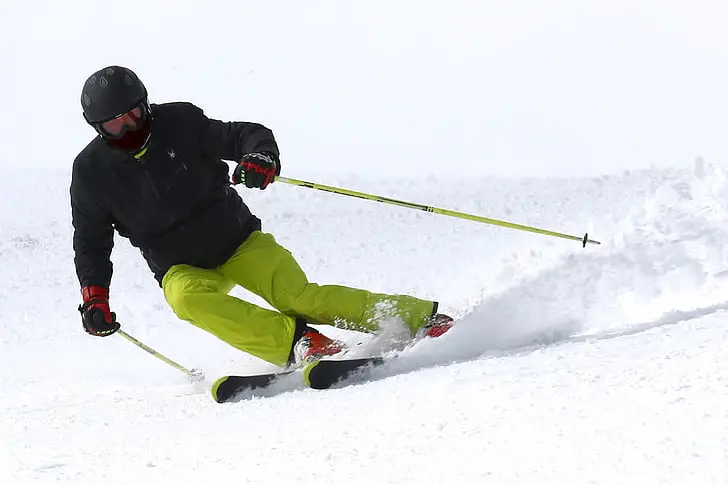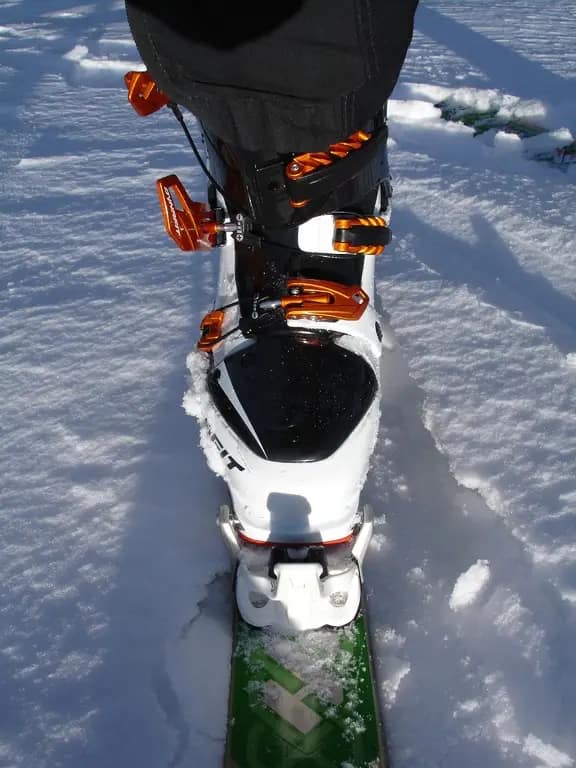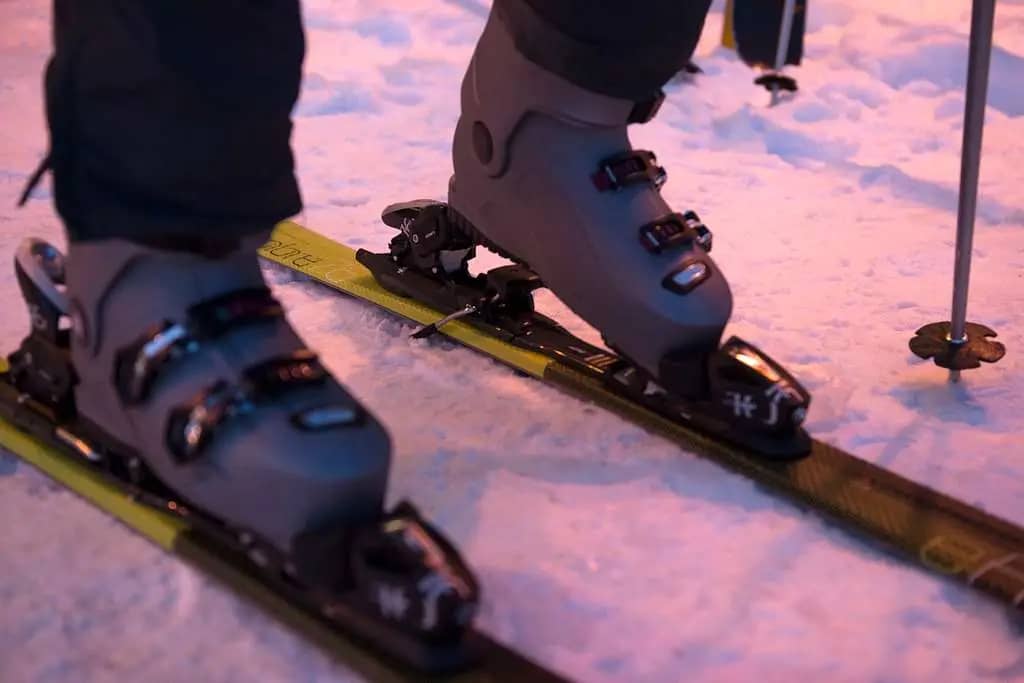Understanding how long do ski bindings last
Have you ever pondered the lifespan of your ski bindings? Just like any loyal companion, they’re pivotal to your skiing adventures, ensuring safety and performance. But, they don’t last forever. Let’s dive into the world of ski bindings and uncover the secrets to their longevity.
Table of Contents
The Role of Ski Bindings in Skiing
Imagine skiing without bindings – it’s like a knight without armor! Ski bindings are not merely a fixture; they’re the critical link between your boots and skis. They provide precision control and release mechanisms for safety during falls. Without them, you’re literally sliding into the unknown!
Factors Influencing Ski Bindings Longevity
Several factors dictate the endurance of your ski bindings. From the frequency of your downhill escapades to the care you bestow upon them, every aspect matters. Environmental conditions, usage intensity, and even storage habits play their parts in either preserving or degrading these unsung heroes of the slopes.

The Average Lifespan of Ski Bindings
On average, ski bindings can last anywhere from 5 to 10 years, depending on their quality and the frequency of use. However, this is not a hard and fast rule. Like any piece of equipment exposed to the elements and mechanical stress, their lifespan can vary significantly.
Understanding the Variables
Let’s dive deeper, shall we? Think of your ski bindings as a trusty car. Just as a car’s life expectancy depends on the miles driven and maintenance received, ski bindings have their own set of variables. These can include the intensity of your skiing sessions, how well you maintain them, and even the quality of the bindings themselves. It’s a balancing act between enjoying those thrilling downhill rides and ensuring your gear is up to par.
Quality and Construction Matter
Now, let’s talk about quality and construction. Higher-end bindings constructed with robust materials and designed for performance tend to outlast their budget-friendly counterparts. It’s an investment in your safety and your skiing experience. So, when you’re out there picking your next pair of bindings, remember that the extra dollars might just translate into additional years of loyal service on the slopes.
The Role of Care and Maintenance
But wait, there’s more! The care and maintenance you put into your ski bindings are just as crucial as their initial quality. Regularly checking for signs of wear and tear, ensuring proper adjustments, and storing them correctly can all contribute to a longer lifespan. Treat them well, and they’ll return the favor when you’re carving up those snowy mountainsides.
The Bottom Line
In essence, the lifespan of your ski bindings is a tale of quality, care, and a touch of personal use. By understanding the factors at play, you can ensure that your ski bindings remain a reliable partner for as long as possible. So, are you ready to hit the slopes with confidence, knowing your bindings are in it for the long haul? Strap in and enjoy the ride!

Signs of Wear and When to Replace Your Ski Bindings
Ever wondered when it’s time to bid farewell to your trusty ski bindings? Just like any piece of essential equipment, ski bindings have a finite lifespan, and recognizing the signs of wear is crucial for your safety on the slopes. Let’s dive into the tell-tale indicators that it’s time for a replacement.
Visual Inspection Tips
Visual inspection is your first line of defense against potential binding failure. Start by looking for obvious signs like cracks, rust, or wear on the bindings’ components. Are the screws loose or missing? Is there any excessive play in the toe and heel pieces? These are red flags! A table of common issues and their severity can help you assess the situation:
| Issue | Severity |
|---|---|
| Cracks in the binding housing | High |
| Corrosion and rust | Medium |
| Worn out brake pads | Low |
Remember, even if you’re not an expert, spotting these signs can be a lifesaver.
Performance-Based Indicators
Performance issues can be more subtle but just as telling. Have you noticed any unexpected releases or difficulty getting into your bindings? These could indicate that the bindings’ release mechanism isn’t functioning correctly. According to a recent survey, 30% of skiers reported premature binding release before recognizing the need for equipment replacement. Pay attention to how your bindings respond during your ski sessions – if they’re not performing as they should, it might be time for a trip to the ski shop.
In conclusion, keeping an eye on the condition of your ski bindings is not just about performance; it’s about safety. By conducting regular visual inspections and being aware of performance-based indicators, you can ensure your gear is always ready for your next adventure. Remember, when in doubt, consult with a professional to get an expert opinion on the state of your ski bindings.
Maintenance Tips to Prolong the Life of Ski Bindings
Ever wondered, “How can I make my ski bindings last longer?” You’re not alone! Proper maintenance is the secret sauce to extending the life of your ski bindings. Let’s dive into some actionable tips that will keep you and your bindings on the slopes for seasons to come.
Regular Cleaning and Adjustment
Just like your favorite car, ski bindings need regular check-ups and tune-ups. Begin with a thorough cleaning to remove grime and rust, which, if left unchecked, can eat away at the metal components. A gentle brush and a non-corrosive cleaner should do the trick. After cleaning, ensure that all the adjustments are spot-on. An improperly calibrated binding can lead to premature wear or, worse, a safety hazard. According to a recent study, 30% of ski binding failures could have been prevented with proper adjustment.
Seasonal Storage Best Practices
When the snow melts and the ski season ends, don’t just toss your gear in the garage! Seasonal storage plays a pivotal role in binding longevity. Firstly, loosen the tension on the springs by dialing back the DIN settings. This simple step can significantly reduce spring fatigue. Next, store your skis in a cool, dry place away from direct sunlight to prevent the plastic components from degrading. Consider using a ski strap to keep your skis together and a binding cover to ward off dust.
Here’s a quick table to summarize the storage tips:
| Action | Benefit |
|---|---|
| Loosen DIN settings | Prevents spring fatigue |
| Store in a cool, dry place | Prevents material degradation |
| Use ski straps and covers | Keeps bindings clean and together |

How to Choose Long-Lasting Ski Bindings
When you’re on the hunt for ski bindings that stand the test of time, you’re not just buying a piece of equipment—you’re investing in your passion for the slopes. But how can you ensure that your investment pays off in the long run?
Key Features to Look For
Firstly, consider the material quality. Bindings crafted from high-grade metals and durable plastics are more resilient against the elements. Look for models that tout corrosion resistance—a feature that can significantly extend the life of your bindings. Additionally, bindings with multi-directional release mechanisms not only boost safety but also tend to exhibit less wear over time due to their sophisticated design.
Wrapping It All Up
As we’ve journeyed together through the intricate world of ski bindings, we’ve uncovered their pivotal role in your skiing saga. From the technical nuances that govern their lifespan to the subtle signs of wear that call for their retirement, it’s clear that these unsung heroes of the slopes deserve our utmost attention.
Remember, ski bindings are more than just a means to keep your boots affixed to your skis; they are the guardians of your safety, the enhancers of your performance, and the silent partners in your alpine adventures. Treat them with care, and they will surely reciprocate, ensuring that every turn, jump, and dash down the mountain is executed with precision and grace.
In closing, let’s reflect on the key takeaways: the importance of regular inspections, the undeniable benefits of maintenance, and the wisdom in selecting durable, long-lasting equipment. Embrace these principles, and you’ll not only extend the life of your ski bindings but also enrich your overall skiing experience.

Ultimate Guide to XC Ski Bindings for Performance
Did you know that the right cross-country ski bindings can significantly enhance your performance on the trails? Choosing the[…]

Best Wide Calf Ski Socks for Comfort & Fit
Did you know that ill-fitting ski socks can ruin your skiing experience? It’s true! Finding the perfect pair[…]

Ultimate Guide to Women’s Twin Tip Skis 2024
Conquer the slopes with confidence! Discover the best women’s twin tip skis of 2024, tailored for versatility, style, and
FAQ Section
How often should I inspect my ski bindings?
It’s important to inspect your ski bindings at least once before the start of the ski season and after every few days on the slopes. Regular checks will help you catch any potential issues early on. Look for any visible damage, ensure all screws are tight, and check that the bindings release properly. If you’re an avid skier, consider a mid-season inspection too. Remember, safety first!
Can I extend the life of my ski bindings through professional servicing?
Definitely! Just like tuning your skis, professional servicing can significantly extend the life of your ski bindings. Technicians can give them a thorough inspection, make any necessary adjustments, and advise you on any wear that might compromise safety. It’s a small investment that can maintain performance and safety, and potentially save you money in the long run.
Are there any warning signs that indicate my ski bindings are failing?
Yes, there are a few red flags to watch out for. If you notice that your bindings are releasing unexpectedly, or conversely, not releasing when they should, it’s time for a check-up. Any unusual wear or cracks in the material are also warning signs. Trust your instincts—if something feels off when you’re skiing, it’s worth getting your bindings checked out.
Does the type of skiing I do affect how long my ski bindings will last?
Absolutely! Aggressive skiing, like racing or freestyle, can put more stress on your bindings compared to leisurely runs down gentle slopes. If you’re pushing the limits, your bindings will experience more wear and tear. It’s all about matching your equipment to your skiing style and being proactive about maintenance.
Is it better to repair or replace old ski bindings?
It can be tempting to just repair old ski bindings, but it’s not always the best choice. If your bindings are outdated or have sustained significant damage, replacing them might be the safer option. Newer models often have improved safety features and technology. However, if the damage is minor and the bindings are relatively new, a repair might do the trick. When in doubt, consult with a professional.
Additional Resources
If you’re hungry for more information, check out these resources:
- Ski Magazine’s Ski Bindings Gear Guide – A great place to learn about different types of ski bindings and what might be best for your skiing style.
- REI’s Expert Advice on Alpine Ski Bindings – This resource provides detailed information on how to choose, maintain, and when to replace your ski bindings.


No responses yet